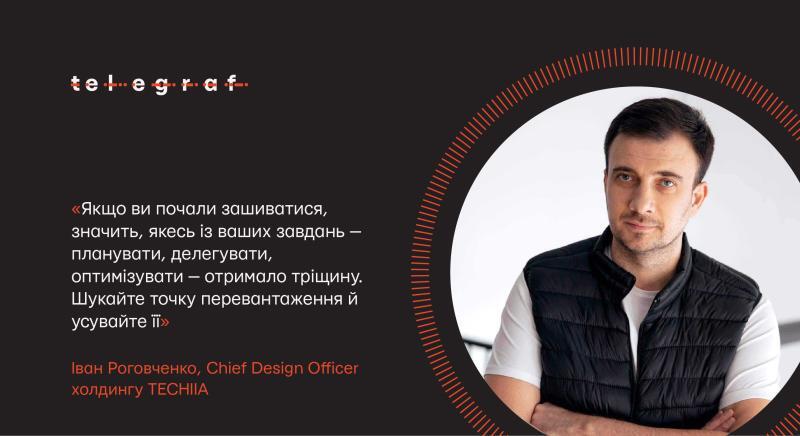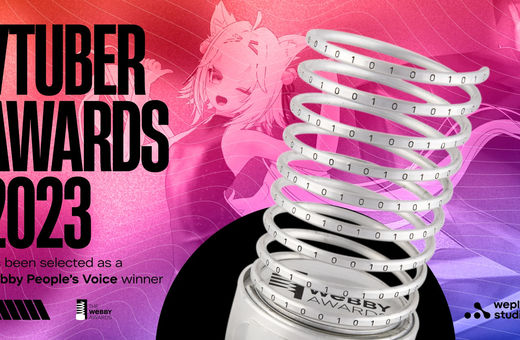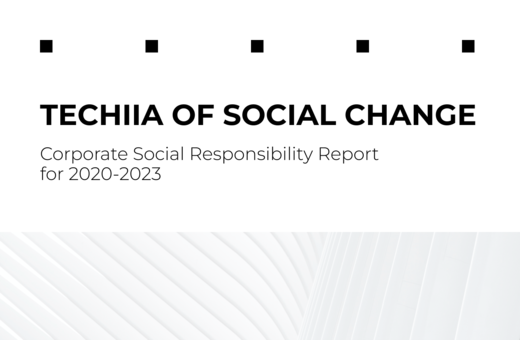
5 Ways to Support Yourself as a Leader.
Ivan Rogovchenko is TECHIIA’s Chief Design Officer and also the Projector’s "Design Team Management” course curator. He has been working in design for 15 years, and three of them he has been leading creative teams. Ivan told Telegraf.Design about what problems the designer faces as a project manager and how to handle new tasks. The fourth article in the series on the transformation of a designer into a manager is devoted to teamwork.
In the last four articles, we have gone through most of the cases that a designer may face
when he/she takes a leadership position. These are:
- how to distinguish between the desire to manage and just the need to earn more money, tasks, or status
- what are the essential skills needed to manage a design team
- what makes a team different from a family and why reconciling values is not a fad
- what rituals and attitudes can be used to establish communication between colleagues
The last episode of the guide will be about attention to yourself and a broader view of workflows. This episode could be published before others, but my experience suggests that thinking about yourself is the last thing that leaders do. However, without this piece, the role of the manager is not complete - and I will try to explain why.
1. Allow yourself to make mistakes
Sometimes the burden of responsibility interferes with the euphoria of new leadership opportunities. The fear of mistakes goes hand in hand with it. After all, it’s one thing when it is about you personally, but it’s totally different when it’s about your whole team.
However, mistakes are inevitable. Management is both a systemic process and a creative one at the same time. Only the level of abstraction is higher. And in the creative process, you need the freedom to make mistakes - and the responsibility for those mistakes.
I consider any mistake made by the team as my mistake. This is especially true for processes or communication: to hire the wrong person, to set the wrong tasks, not to outline criteria, to reveal the topic late, and to miss deadlines. Here’s my recipe for this: repair the process and put a notch for the future.
There is an individual category of mistakes - the so-called business mistakes. They involve risk: you have done something beyond to reach a whole new level - and you have failed. How to deal with it? If the risk was justified, if you had the opportunity to achieve a strong result - draw conclusions about the process and give yourself credit for your courage. If the risk was for the sake of risk, if the losses are disproportionate to the possible outcome - again, put yourself a notch for the future.
For a beginner, mistakes are the best way to learn. It is important to be responsible for them and draw conclusions quickly. In a creative team, this is generally a necessary skill. After all, how can you teach people bold design experiments, if you yourself are afraid to take a step beyond the usual?
2. Remember about the value
Once becoming a manager, you will enter a new team - the team of leaders. Yes, you are the chief among designers, but you are equal among other leaders. Here we need partnership, the ability to negotiate, constant synchronization. Only the requirements and responsibilities are higher.
A new mission is added to your list - to protect and lead the entire design direction. You are now the entry point for criticism and the exit point for argumentation. All credits for positive results goes to your team. For bad results - they are on you.
This is a starting point for other departments not to make design decisions. You need to clearly show your project partners the benefits of design, do healthy advocacy, and increase your overall level of design literacy.
Remember the main thing:
Design is just a stage of value creation. One of many.
For example, in WePlay Esports, one of the TECHIIA companies, many people work on the product: developers, marketers, studio, production, sales department. Even if you have a specialized design agency, it is not only about creating images. It is necessary to establish communication with other specialists and teams. Then the design is more efficient and useful.
In 2018, when we were growing up, I had about 200 interviews. I have heard from many candidates in their past jobs that everything was about the design. It was praised, "because that's what everyone does." But without a context of business goals, creativity simply flushes away the company's money, which usually ends badly.
Your task is to make everything so that design helps businesses make money and reach the company's goals in general.
It can also be vice versa when the design is completely neglected. As a rule, these are very small companies with a very limited budget.
I remember the words from a European design conference: "Why is it necessary to prove the need for a designer, but not programmers?"
When the task is performed by a non-specialist, we lose quality. Look at banking systems and CRM - we are still analyzing the consequences of the fact that once the focus was on functionality, technology, but not the ease of use. It is good that businesses are starting to understand that design helps convey messages to customers, highlights the market. And in B2C products you can’t do without a design at all. Moreover, you need a whole team for digital products.
If the company does not understand the importance of design, it is impossible to justify it from the outside. You can be any diplomat, but as long as the founders don't realize that emotions sell, you will not succeed.
The good news is that this is unlikely to happen in a place where there is a design manager position. If you have at least one person having your back, then the company recognizes the importance of design. Just prove it in practice.
3. Handle criticism
One of the most annoying things for a manager is when people from other departments try to get into your work. The simplest recommendation is to fight back because no one inside your company understands design better than your team. But before that, check two points:
- you may not know what is expected of you - and they are trying to tell you what the desired result is
- you may need to re-evaluate the quality of the colleagues you work with
To rule out these reasons, you need to confirm that your decisions are correct.
First, you, as the chief designer, must evaluate the design as objectively as possible. We have already talked about how to abstract from your colleagues’ work to give a better recommendation.
Second, try to take your team's work out of subjectivity globally. Involve testing, analytics, product metrics, feedback.
Third, talk to users, collect feedback within the company.
Fourth, rely on the market. This does not always work, but most often the design solution is either based on trends or contrasts with others.
Design is always in sight, it is commented on by every “expert”, just like politics, football, and medicine. 95% of reviews are "likes - dislikes" with no arguments. Do not overreact to such reviews, be sure to ask for constructive arguments.
If such a critic is relevant to the subjects it can be very helpful. For example, if the marketing department has some important market insight or research results, that gives a point for creatives to be optimized. But if it’s just “hmm, I don’t like it”- simply ignore it.
On the other hand, I might not always be objective, so I remind myself that I cannot know everything. It is impossible to abstract from the results of the team's work 100%, I am still attached to them.
Another point: the level of visual culture is gradually increasing. So, there can be just people with good taste and an inner sense of beauty. They are worth listening to.
4. Gain knowledge
On the way to a manager’s position, sooner or later (probably sooner) you will require project management, team selection, and goal setting expertise.
Don't waste time on gaining knowledge just because "you need to learn!".
The best moment for creativity and absorbing the new is cognitive dissonance when the old no longer works, and you haven’t come up with something new. Then the brain itself will reach for external resources and help. All you have to do is deeply analyze what the world has to offer to land on your own experience. After all, the experience will still be unique.
Where to get knowledge?
One of the best ways is to find a mentor.
It is important so this person is a non-partisan with managerial experience who inspires confidence in you. Then the brain itself will crave learning. It can be another company’s CEO, a product manager, or a manager of another team. He/she does not necessarily have to be a designer - there are few specific skills in people management that only work for us.
Try to record your management decisions and after a while conduct their analysis. This will help turn successful solutions into systemic ones and fix errors.
For example, it was after one incorrect decision that we revised the promotion process.
One time I decided to promote one of my team members. Before that, this designer was demonstrating good results, increasing skills, so it seemed logical to promote him. Unfortunately, it soon became clear that the person was not ready for new responsibilities and tasks. Because of this, the team result also rained down.
When analyzing the decision, I realized that it was a hasty decision, I did not consider whether the person will cope. So now we are making new assignments based on facts. We give a person a task of a new level and say that we are considering the promotion. If this person can cope with such a task, and, in case of any mistakes, the right conclusions were made from these mistakes, we conclude that this person is ready for a new position. This approach works not only for the design team but also for product and development teams.
Choosing a person for the task is one of the most frequent and important decisions of the leader. Analyze exactly how you do it. I'm sure you'll find a lot of insights.
Gather feedback from the team. Communicate with other colleagues. Be sure to ask "how can I help you as a manager?" question. The answers might sometimes be very surprising and compelling to reconsider approaches.
Always read. Blogs, cases, colleagues’ knowledge sharing. Fiction or fantasy books are also of great help. Even in some fantasy about the battle of fictional characters, you can find many examples of how to interact with a team.
If you are looking for some specific books on management, here is my list:
- Who: Solve Your #1 Problem by Geoff Smart and Randy Street. It will help you with choosing the right individuals for the job.
- Org Design for Design Orgs: Building and Managing In-House Design Teams by Kristin Skinner and Peter Merholz. The only book where the structures of design teams and their variations are properly described;
- Radical Candor: Be a Kick-Ass Boss Without Losing Your Humanity by Kim Scott - on how to give and receive feedback and keep a good relationship with the team;
- Principles by Ray Dalio - a powerful synopsis of rules that should be applied when working with teams;
- Herding Tigers: Be The Leader That Creative People Need by Todd Henry. The book will help those who start working with the team; auxiliary rituals such as one-to-one, regular meetings, etc .;
- Measure What Matters by John Doerr - the principles of goal formation, metrics, and their further processing.
- Crossing the Chasm, 3rd Edition: Marketing and Selling Disruptive Products to Mainstream Customers by Geoffrey A Moore. The section on reverse planning from the goal to the present day was one of the most insightful for me.
And, of course, keep the curiosity and self-reflection mode on. So you get most of the insights - not only from knowledge and experience but also from everyday conversations, articles, books, movies.
5. Don’t forget to rest
Most often, becoming a manager means a sharp increase in workload. You have to keep a lot of information in your head, a lot of stuff to do, which means keep working, and working, and working...
However, in the process, you will understand that rest is a duty, not a privilege.
The same technique works as with the design concept. You face a task/problem, feed your brain with the needed information and give yourself a break. After a break and a night of healthy sleep, the brain itself will give you the result. And a timely vacation will bring you tons of new ideas.
In addition to creativity, the mood is especially important in management. A sleepless, exhausted body processes its own and other people's emotions much worse. After a rest, it is much easier to perceive criticism, colleagues’ skepticism and to settle conflicts. Often you have to be a bit of a “father” to your employees. It is good when this “father” is balanced and willing to accept the imperfections of the world and his “kids”.
Remember: a manager is not one who takes on all the work. Do not be led by narcissistic slogans from social networks and squeezing yourself by 150%. If you start trying to cope with too much work, one of your tasks (planning, delegating, optimizing) or even all of them will fall into pieces. Look for the point that brings you too much workload and eliminate it.
Everything is in your hands.
Original article on .


